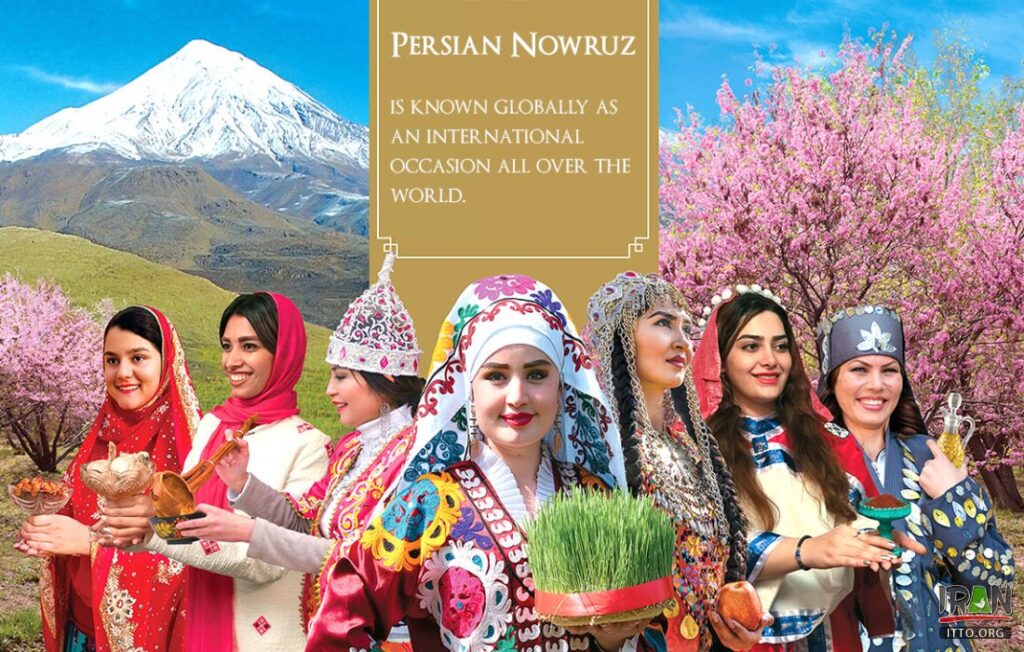
Nowruz is a widely celebrated traditional festival that marks the start of the Persian New Year. It is celebrated by millions of people all over the world and is observed as a public holiday in many countries. The festival is also known as the Iranian New Year, and it is celebrated on the day of the vernal equinox, which usually falls on March 20th or 21st. Nowruz is a time of renewal, hope, and joy for many people, and it is an opportunity to celebrate life and the beginning of a new chapter.
History
The origin of Nowruz dates back to ancient Persia, and it is believed to have been celebrated for more than 3,000 years. The festival has its roots in Zoroastrianism, which was the dominant religion in Persia before the arrival of Islam. Nowruz is also closely linked to the natural cycles of the earth and the sun, which are celebrated as a symbol of rebirth and renewal. The name “Nowruz” is derived from two Persian words, “now” meaning new and “ruz” meaning day, which together mean “new day”.

Nowruz is celebrated for several days, and the preparations begin weeks in advance. People clean their homes and buy new clothes, and they also decorate their homes with flowers and other traditional symbols of the festival. One of the most important traditions of Nowruz is the haft seen, which is a table setting that includes seven items that start with the Persian letter “sin” and represent different aspects of life, such as health, wealth, happiness, and love. The haft seen typically includes items such as apples, garlic, coins, candles, and a mirror.

Another important tradition of Nowruz is the practice of visiting friends and family, which is known as “Eid didani” in Persian. People often bring gifts and sweets when they visit, and it is customary to offer guests tea, fruits, and nuts. Many people also take this opportunity to reconcile with friends and family members with whom they may have had disagreements in the past.
Nowruz is also a time for feasting, and traditional foods such as sabzi polo ba mahi (rice with herbs and fish), reshteh polo (rice with noodles and meat), and ash-e reshteh (a type of soup made with herbs and beans) are often served. People also engage in outdoor activities, such as picnics and hiking, as the weather begins to warm up.
In addition to its cultural and social significance, Nowruz also has a spiritual dimension. It is a time for introspection and self-reflection, and many people take the opportunity to set goals and make resolutions for the year ahead. Nowruz is also a time for charity, and many people make donations to help those in need.
Nowruz is celebrated by millions of people around the world, particularly in Iran, Afghanistan, and Central Asia. It is recognized as a public holiday in many countries, including Iran, Afghanistan, Tajikistan, and Iraq. The United Nations General Assembly has also recognized Nowruz as an international holiday and declared March 21st as the International Day of Nowruz.
In conclusion, Nowruz is a beautiful and meaningful festival that celebrates the arrival of spring and the beginning of a new year. It is a time for renewal, hope, and joy, and it brings people together to celebrate life and the natural cycles of the earth. Nowruz is an important cultural and social tradition, and it is a symbol of the rich and diverse heritage of the Persian people.
Difference between Iranians & Persians

The Western world used to refer to Iran as “Persia” until 1935, a name that was derived from the ancient kingdom of Parsa and the Persian empire that once dominated the region. However, Iranians themselves have referred to their country as Iran or Eran for a long time. The international adoption of the name “Iran” occurred in 1935, and in 1979, the Islamic Republic of Iran was established after the revolution that ousted Shah Mohammad Reza Pahlavi’s government.
Today, “Persia” generally refers to Iran because the country was established over the center of the ancient Persian empire and most of its original inhabitants lived in that region. Despite being composed of various ethnic and tribal groups, modern Iran is predominantly made up of people who identify as Persian. Nevertheless, a significant number of Azeri, Gilaki, and Kurdish people also reside in Iran. Although all Iranian citizens are Iranians, only some of them can trace their ancestry back to Persia.